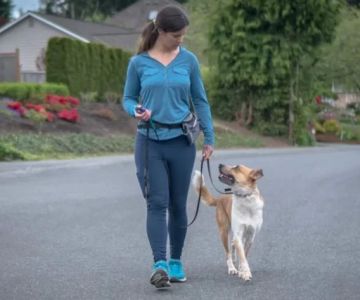- 1 - #understanding-why-dogs-bark - Understanding Why Dogs Bark
- 2 - #what-is-clicker-training - What Is Clicker Training?
- 3 - #how-clicker-training-works-to-reduce-barking - How Clicker Training Works to Reduce Barking
- 4 - #step-by-step-guide-to-clicker-training-for-barking - Step-by-Step Guide to Clicker Training for Barking
- 5 - #real-examples-of-clicker-training-success - Real Examples of Clicker Training Success
- 6 - #common-mistakes-to-avoid-when-using-clicker-training - Common Mistakes to Avoid When Using Clicker Training
- 7 - #why-hidden-brook-veterinary-recommends-clicker-training - Why Hidden Brook Veterinary Recommends Clicker Training
1. Understanding Why Dogs Bark
Barking is a natural form of communication for dogs. They bark to express excitement, fear, frustration, or to alert their owners to something unusual. However, excessive barking can become a nuisance and even a behavioral problem. Before beginning any training, it’s important to identify the root cause of your dog’s barking. Is it boredom, anxiety, or territorial behavior? Recognizing the “why” behind the barking allows you to address the issue effectively.

1946 S Christopher Columbus Blvd, Philadelphia, PA 19148, USA
See Details1.1 Emotional and Environmental Triggers
Some dogs bark when they feel anxious or when left alone for long periods. Others react to external stimuli like mail carriers, passing cars, or other dogs. For example, if your dog barks at every noise outside, they might be reacting out of territorial instinct or insecurity. Understanding these triggers will guide you in creating an effective training plan using clicker methods.
2. What Is Clicker Training?
Clicker training is a form of positive reinforcement that uses a small device — the clicker — to make a distinct sound every time your dog performs the desired behavior. The click sound is immediately followed by a reward, typically a treat or affection. Over time, your dog learns to associate the sound with positive outcomes and will begin repeating the behavior that earned the click.
2.1 Why It Works
The reason clicker training is so effective is because it provides clear and consistent communication between you and your dog. Unlike verbal cues that can vary in tone or emotion, the clicker’s sound is always the same, making it a precise tool for marking good behavior.
3. How Clicker Training Works to Reduce Barking
Clicker training focuses on teaching your dog what to do instead of barking excessively. By rewarding calm and quiet behavior, your dog learns that silence earns rewards — while barking brings no benefit. This shift in behavior is achieved through repetition, consistency, and patience.
3.1 Conditioning the Clicker
Start by “charging” the clicker. This means clicking the device and immediately giving your dog a treat several times in a row. After a few repetitions, your dog will understand that the click sound means a reward is coming. Once the association is built, you can begin using the clicker to mark quiet moments or desired behaviors.
3.2 Rewarding Silence
When your dog starts barking, wait until they pause for a few seconds. The instant they stop, click and reward. Over time, your dog learns that being quiet gets them a treat. You can gradually increase the required duration of silence before clicking, shaping the behavior for longer quiet periods.
4. Step-by-Step Guide to Clicker Training for Barking
4.1 Step 1: Prepare Your Tools
All you need is a clicker, some of your dog’s favorite treats, and a quiet training environment. Make sure your dog is relaxed and focused before starting the session.
4.2 Step 2: Identify the Triggers
Pay attention to what makes your dog bark. For example, if they bark when someone knocks on the door, you can use that situation to practice teaching calm behavior with the clicker.
4.3 Step 3: Click and Reward the Quiet
When your dog begins barking, wait until they stop — even for just one second. Click immediately when the barking ceases and give a treat. The timing is crucial; your dog must associate the reward with the silence, not the barking.
4.4 Step 4: Introduce a Cue Word
Once your dog understands that being quiet is rewarded, introduce a verbal cue like “Quiet” or “Enough.” Click and treat each time your dog obeys the command. Eventually, the cue alone will be enough to stop barking without the clicker.
4.5 Step 5: Practice in Real-Life Situations
Start with low-distraction environments and slowly increase the difficulty. For instance, begin training in a quiet room, then move to the backyard, and finally to more challenging environments like a park or busy street.
5. Real Examples of Clicker Training Success
Many dog owners across the U.S. have successfully used clicker training to manage barking. For example, a Labrador named Max used to bark non-stop whenever someone passed by the window. His owner used clicker training to reward moments of silence instead. Within two weeks, Max’s barking decreased by 80%, and within a month, he would simply look out the window quietly instead of barking.
5.1 Another Case: Overcoming Separation Anxiety
A smaller dog named Bella suffered from separation anxiety, barking every time her owner left home. Using clicker training paired with gradual desensitization, her owner was able to teach her to stay calm when alone. Each time Bella remained quiet after her owner stepped out, a click and treat reinforced her calm behavior. Today, Bella spends hours alone without barking excessively — a huge relief for her owner and neighbors alike.
6. Common Mistakes to Avoid When Using Clicker Training
While clicker training is powerful, some common mistakes can slow down progress or confuse your dog.
6.1 Inconsistent Timing
Timing is everything in clicker training. If you click too late, your dog may associate the reward with the wrong behavior, like barking instead of being quiet. Always click the instant your dog exhibits the desired action.
6.2 Overusing the Clicker
It’s important to use the clicker strategically. Once your dog reliably understands the behavior, start phasing out the clicker and replace it with verbal praise or other rewards.
6.3 Expecting Instant Results
Behavioral change takes time. Some dogs learn in days; others need weeks of consistent training. Patience, persistence, and positive reinforcement are key to long-term success.
7. Why Hidden Brook Veterinary Recommends Clicker Training
At Hidden Brook Veterinary, we believe that positive reinforcement training like clicker training is one of the most humane and effective methods for improving dog behavior. Unlike punishment-based techniques, clicker training strengthens the bond between you and your pet while promoting trust and confidence. It encourages learning through rewards, not fear.
Whether your dog barks due to anxiety, excitement, or habit, clicker training can provide a lasting solution. If you’re struggling with excessive barking, our experts at Hidden Brook Veterinary can help tailor a personalized training plan to your dog’s needs and guide you toward calmer, happier days together.









